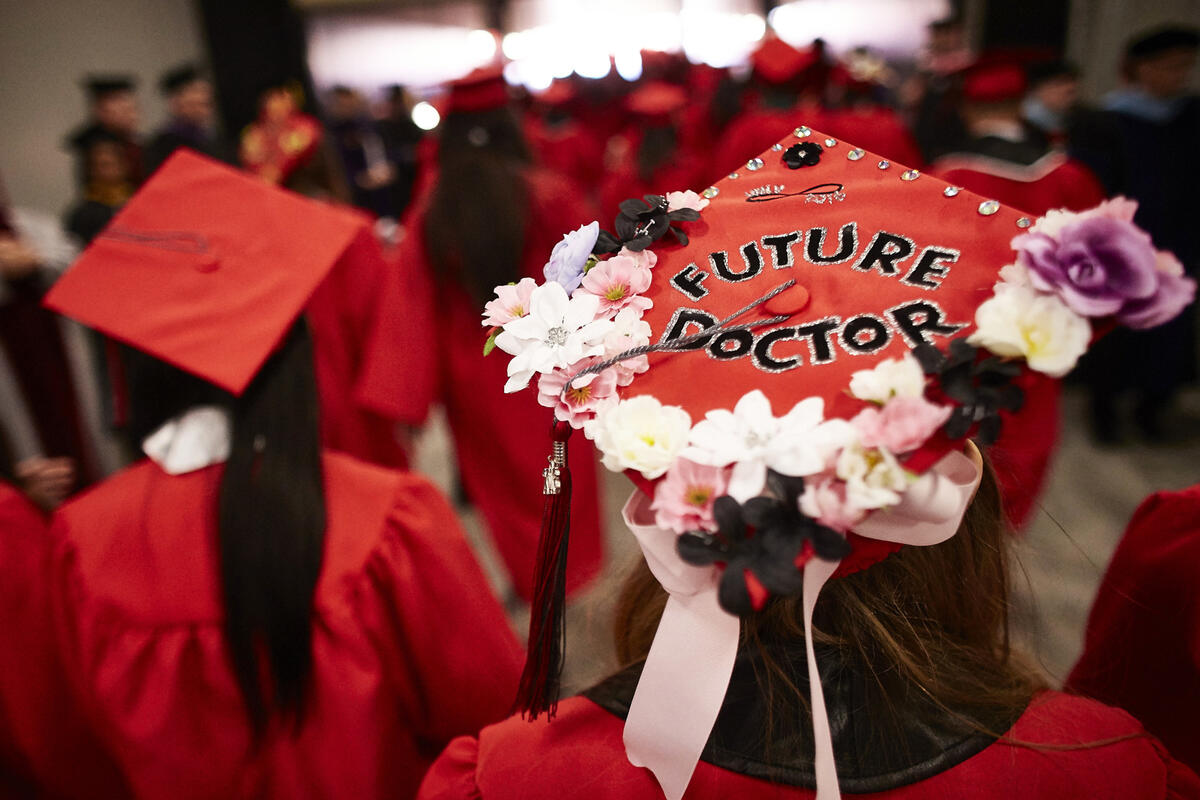Graduation ceremonies have long been formal occasions, featuring monochromatic fields of gowns and mortarboards as students commence their post-college lives in ritualistic fashion.
Observers of these ritual ceremonies now find decorated grad caps proclaiming "LOL BYE," "Game of Loans," and "Nevertheless, she persisted." The stately academic decorum is punctuated with DIY adornment of pop-culture characters and social media memes. Some grad caps hint at obstacles overcome or future plans. Others offer memorials and even three-dimensional pastoral landscapes.
When Sheila Bock noticed the proliferation of decorated caps at a 2011 commencement, her "folklore radar went off."
"This was a tradition that was truly from the ground up rather than the top down and happening in highly formal settings. The use of social media has made this more widespread," says Bock, a professor of interdisciplinary, gender and ethnic studies at UNLV, whose publications have included “Ku Klux Kasserole and Strange Fruit Pies: A Shouting Match at the Border in Cyberspace” and "‘What Happens Here, Stays Here’: Selling the Untellable in a Tourism Advertising Campaign.”

She began photographing the caps and gathering the stories behind them. In 2016, she launched an official study and approached the Center for Folklore Studies at Ohio State University (from which she received her master’s and doctoral degrees) to help create a digital archive of the materials. Officially titled “Decorated Mortarboards: Forms and Meanings,” the project invites participation through surveys, interviews, and social media posts with #gradcaptraditions.
"The materials are so interesting and so rich that I didn't want to just collect these things and store them in my own files," Bock says.
These vernacular forms of creative expression convey both humorous and profound messages, providing an informal barometer of the era. The decorations may speak to the experiences of being an immigrant in the U.S. or to the challenges of being a first-generation college student.
One graduate from another region included tickets from the commuter train taken to school. Another decorated her cap with pieces of her grandmother’s work dress. And another spoke to financial frustration with "Was this BS worth all the BS?"
In a time of anxieties over achieving the American Dream, “it’s an understandable question to ask,” Bock notes.
The majority of the caps documented so far have come from recent UNLV grads, though participation in the project is open to anyone no matter where or when they graduated. She’s also documented why some graduates chose not to decorate their caps — often because they didn’t want to veer from the gravity or formality of the occasion, Bock says.
But those who did decorate embraced the chance to stand out in the crowd and represent their stories. One grad with a Beatles-themed cap explained to Bock that she and her father were fans together; he had passed away so she wanted to pay tribute to him. Another nontraditional student described her journey as a form of hope and inspiration: "1 ex, 2 kids, 9 jobs, 1 husband, 1 addiction, 13 years, 127 credits, 66k loans = 1 college grad!!!"
Jaqueline Eddy, a UNLV grad interviewed by Bock decorated her cap with a picture of her son and the phrase, "I did it for us."
Claudia Chiang-Lopez's cap read, “Viaja aprende sirve.” The first-generation immigrant from Mexico wanted to include Spanish text to celebrate her heritage, especially what her parents did for her by coming to the States. The English translation of the phrase, "learn, travel, serve," is a tagline from a student group she joined that took her to other cities to do service work and study social justice issues.

Personal stories are recurring themes in these caps, Bock says, adding that a scrapbooking approach often crafts a narrative, whether it's simple and fun or layered with depth.
"These caps are going to change over time," she says, adding that she'd like the project to be ongoing. "Folklorists document and analyze traditions and take on projects that, to others, might seem trivial."
The research, however, confirms that there's nothing particularly trivial about these material sites of folk expression. Floral, photographic, collage or sculptural, the works pop from the blank canvases of the caps, allowing grads to stand out within the formality of the occasion, express their anxieties, and celebrate their heritages, their journeys, their families and futures.




